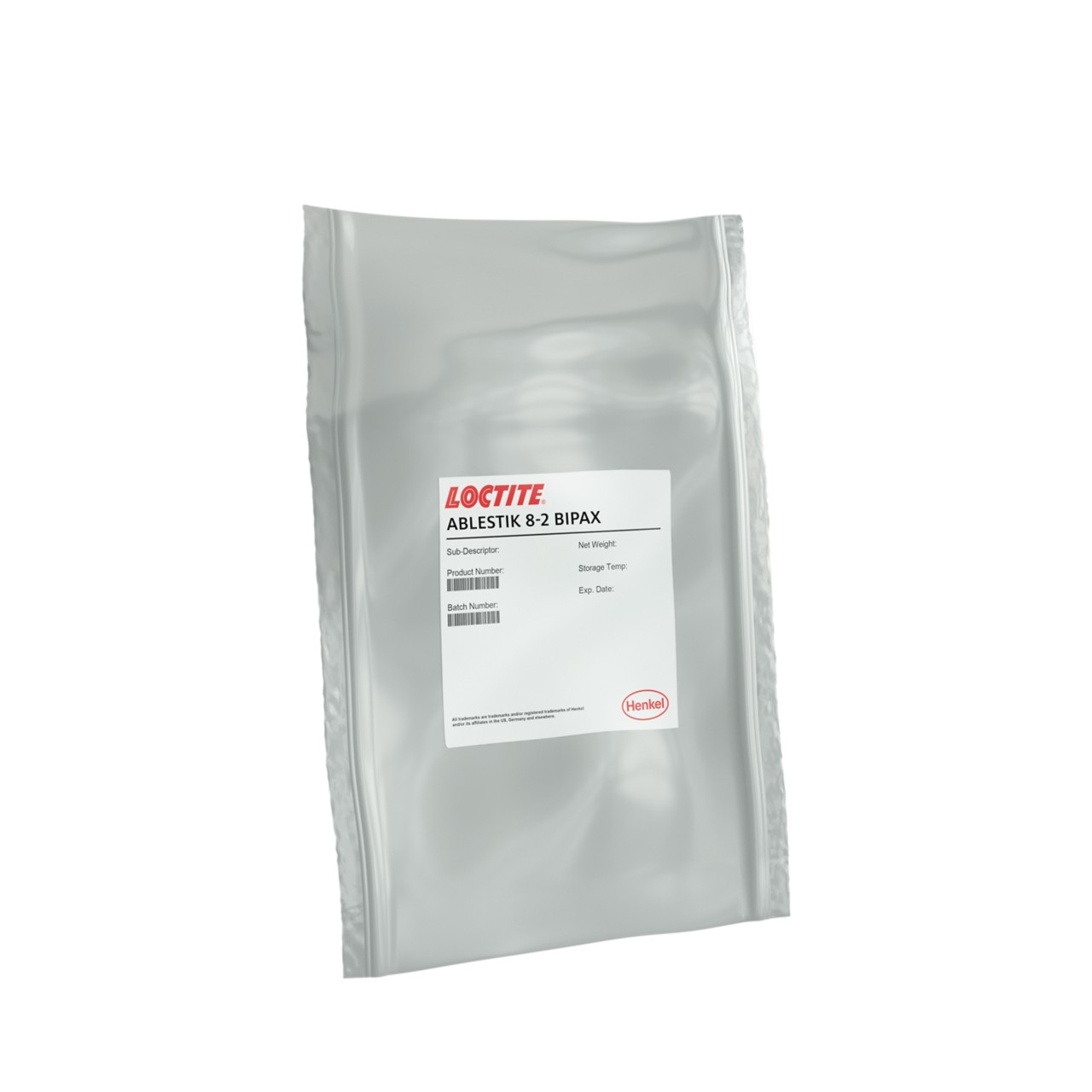LOCTITE ABLESTIK 8-2
Harmonization Code : 3506.10.00.00 | Prepared glues and other prepared adhesives, not elsewhere specified or included; products suitable for use as glues or adhesives, put up for retail sale as glues or adhesives, not exceeding a net weight of 1 kg
Main features
- Thermally conductive
- Positive under UV light
- For MEMs packages
Product Description
LOCTITE ABLESTIK 8-2 non-conductive die attach adhesive is designed for MEMs package applications. Designed as an instrument adhesive, LOCTITE ABLESTIK 8-2 adhesive offers eight times the thermal conductivity of unfilled epoxies. Bonds made with LOCTITE ABLESTIK 8-2 can withstand continuous exposure @ 150 °C and intermittent exposure @ 200°C.
Cure Schedule
- 1.5hours @ 95ºC
- 45 minutes @ 120°C or
- 4 hours @ 75°C or
- 24 hours @ 60°C
Technical Specifications
| General Properties | |
| Specific Gravity Specific Gravity Specific gravity (SG) is the ratio of the density of a substance to the density of a reference substance; equivalently, it is the ratio of the mass of a substance to the mass of a reference substance for the same given volume. For liquids, the reference substance is almost always water (1), while for gases, it is air (1.18) at room temperature. Specific gravity is unitless. | 2.3 |
| Work life @25°C Work life @25°C Work life is the amount of time we have to work with a material until it is no longer able to be easily worked and applied on a substrate. It is based on the change in viscosity and it can rely on the application requirements. | 4 hours |
| Thermal Properties | |
| Glass Transition Temperature (Tg) Glass Transition Temperature (Tg) The glass transition temperature for organic adhesives is a temperature region where the polymers change from glassy and brittle to soft and rubbery. Increasing the temperature further continues the softening process as the viscosity drops too. Temperatures between the glass transition temperature and below the decomposition point of the adhesive are the best region for bonding. The glass-transition temperature Tg of a material characterizes the range of temperatures over which this glass transition occurs. | 92 °C |
| Thermal Conductivity Thermal Conductivity Thermal conductivity describes the ability of a material to conduct heat. It is required by power packages in order to dissipate heat and maintain stable electrical performance. Thermal conductivity units are [W/(m K)] in the SI system and [Btu/(hr ft °F)] in the Imperial system. | 1.5 W/m.K |
| Weight Loss @ 300°C | 0.1 % |



